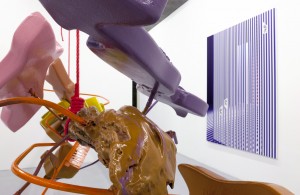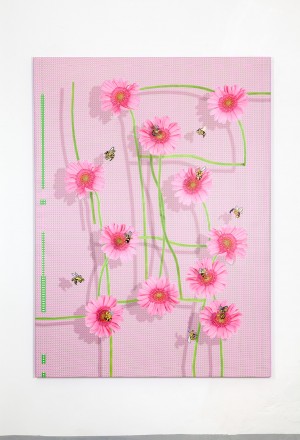











‘By 2005 or so, it was becoming clear that electronic music could no longer deliver sounds that were ‘‘futuristic.’’ From the end of World War II up until the 1990s, electronic music—whether produced by high-culture
composers such as Pierre Schaeffer or Karlheinz Stockhausen or by synthpop groups and dance-music producers—had been synonymous with a sense of the future, so much so that film and television would habitually turn to electronic music when it wanted to invoke the future. But by 2005, electronica was no longer capable of evoking a future that felt strange or dissonant. If electronic music was ‘‘futuristic,’’ it was in the same sense that fonts are ‘‘gothic’’—the futuristic now connoted a settled set of concepts, affects, and associations. Twenty-first-century electronic music had failed to progress beyond what had been recorded in the twentieth century: practically anything produced in the 2000s could have been recorded in the 1990s. Electronic music had succumbed to its own inertia and retrospection. It was also clear that this was more than a moment in a familiar pattern, in which, as one genre wanes, another emerges to take its place at the leading edge of innovation. There was no leading edge of innovation any more. In music, as elsewhere in culture, we were living, in Franco Berardi’s suggestive phrase, after the future.’
‘The future is always experienced as a haunting: as a virtuality that already impinges on the present, conditioning expectations and motivating cultural production. What hauntological music mourns is less the failure of a future to transpire—the future as actuality—than the disappearance of this effective virtuality.’
Excerpt from: Mark Fisher, What is Hauntology? First published in: Film Quarterly, vol. 66, no. 1, pp. 16-24, University of California Press, 2012.
Anne de Vries (1977, The Hague) lives and works in Amsterdam and Berlin.
Through the use of different media, such as photography, video, sculpture, and installation, de Vries explores the relationship between technology, media, mass experience, and the limits of human agency.
His work has been shown in several solo exhibitions and numerous group exhibitions, such as ‘Hybrid Layers’ at ZKM Karlsruhe (DE), MOMENTUM 10 Nordic Biennale (NO), ‘Material World’ Nest Den Haag (NL), ‘Submission’ solo at Cell Projects London (UK), ‘Qrowd Qontrol’ solo at Fries Museum Leeuwarden (NL), ‘It aint whatcha write, it’s the way atcha write it’ at Manifesta Foundation (NL) ‘Back to School’ performance at MoMA PS1, New York (USA), The 9th Berlin Biennale (DE), ‘The Dark Cube’ at Palais de Tokyo (FR), ‘Superficial Hygiene’ at Frans Hals Museum Haarlem (NL), Based in Berlin (DE), The Moving Museum (TR), ‘Hybrids’ Lustwarande Tilburg (NL), CCA London (UK), La Biennale de Lyon Resonance (FR), E_MERGE solo at Foam Museum Amsterdam (NL), Museum Angewandte Kunst Frankfurt am Main (DE), MAMbo Museum, Bologna (IT), Situations‘ at Winterthur Museum (CH), TruEYE SurView at W139 (NL).
Publications: DEEP SCROLL by Anne de Vries, Onomatopee Publishers (June 2019), TruEYE Surview by Katja Novitskova, Martin Jaeggi, Joshua Simon, Karen Archvey, Anne de Vries. W139 Publishers (2011).